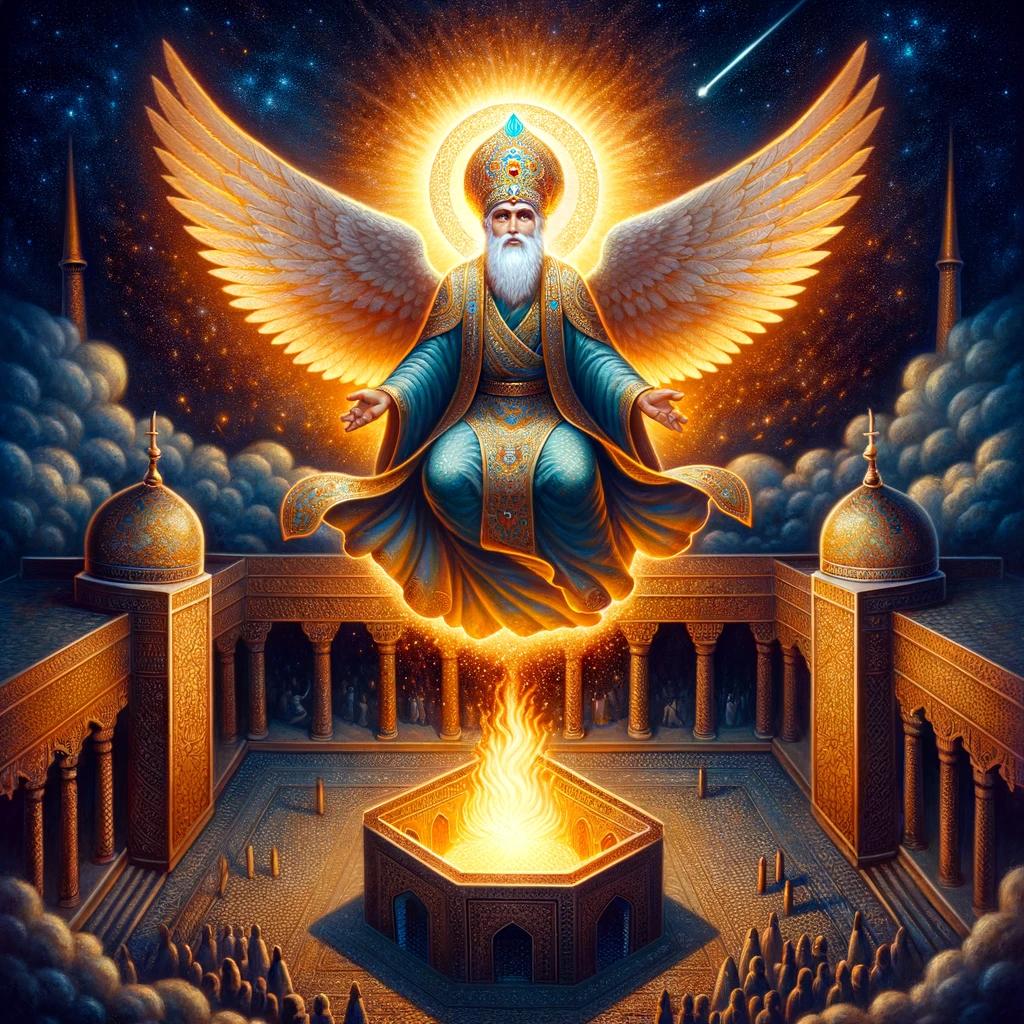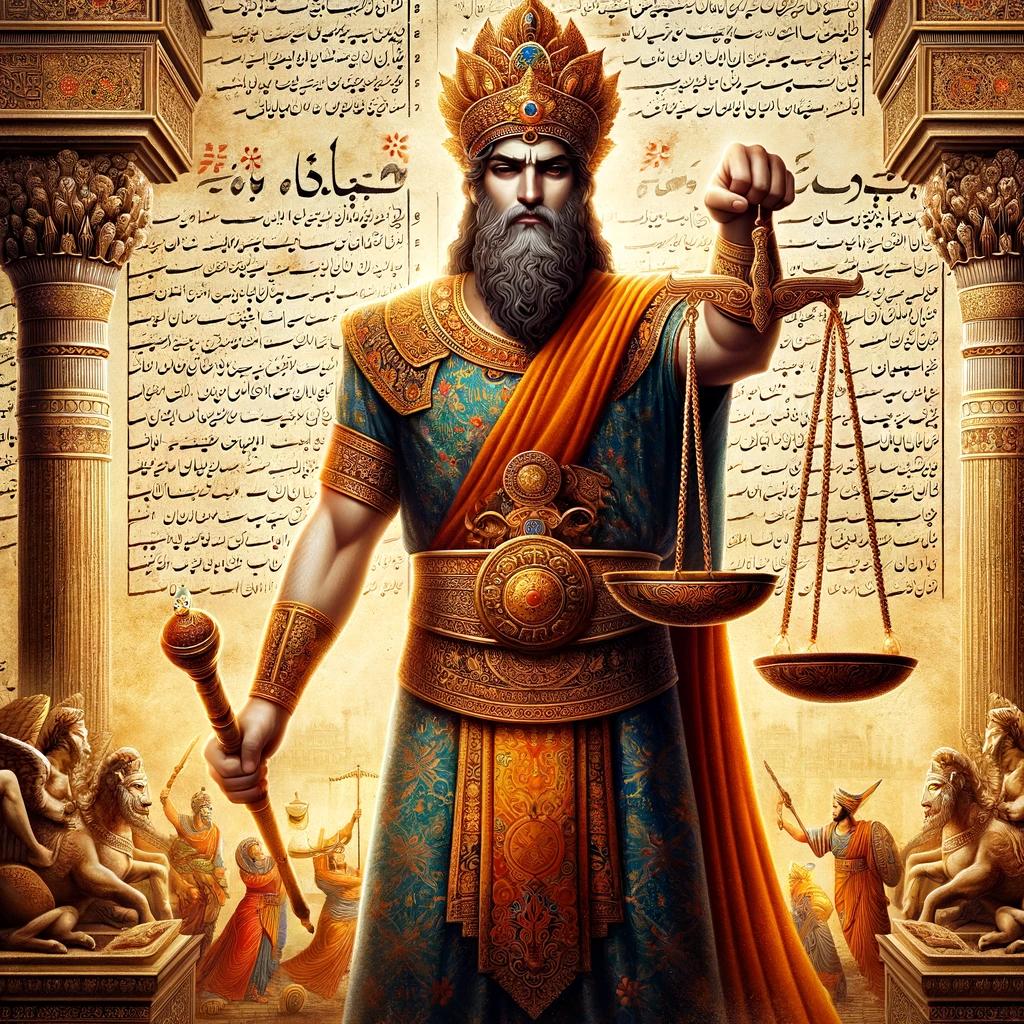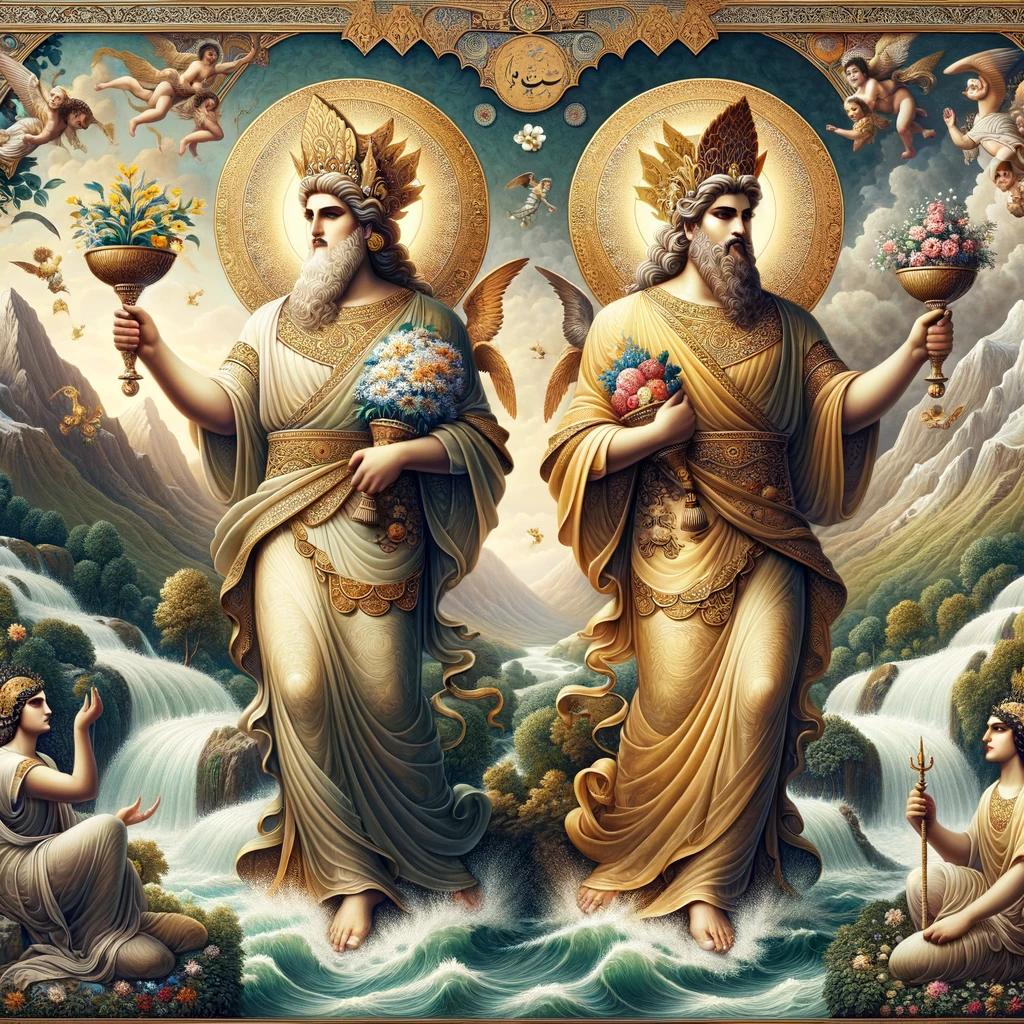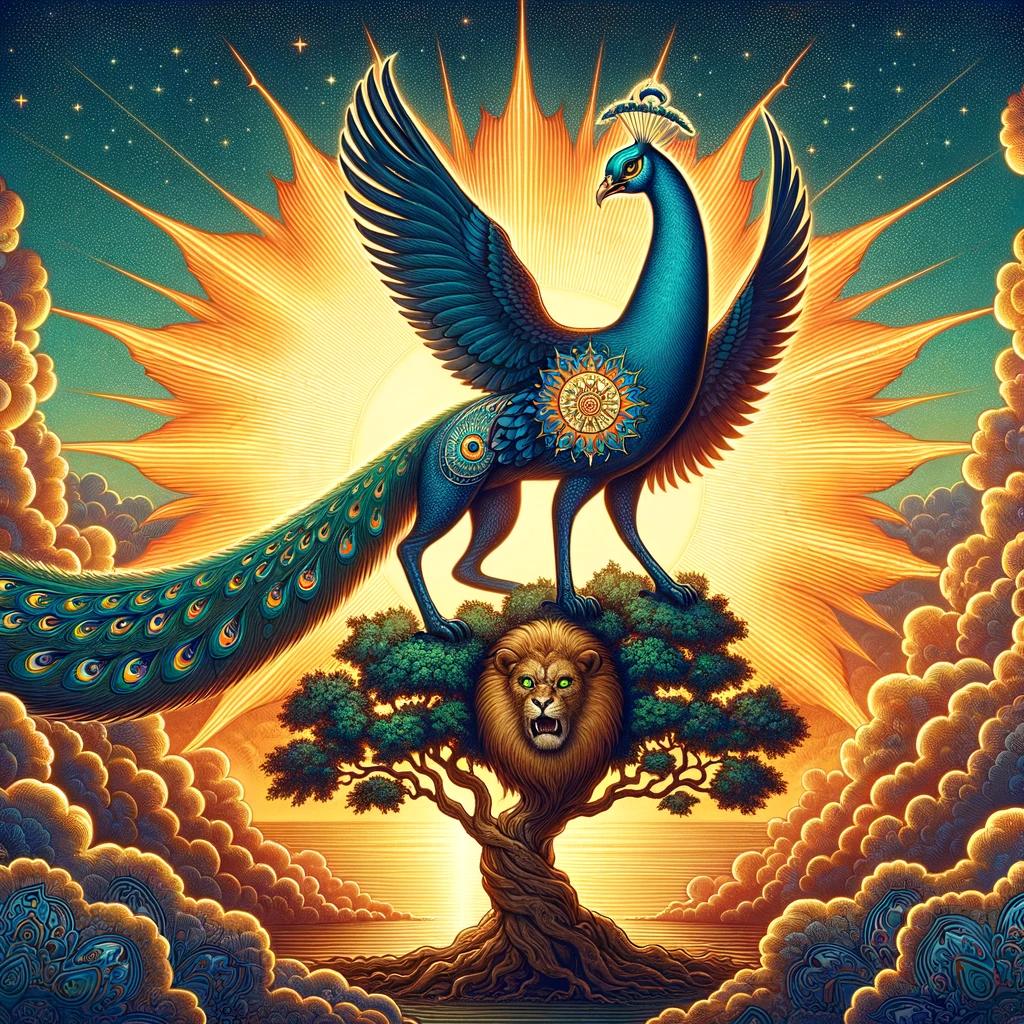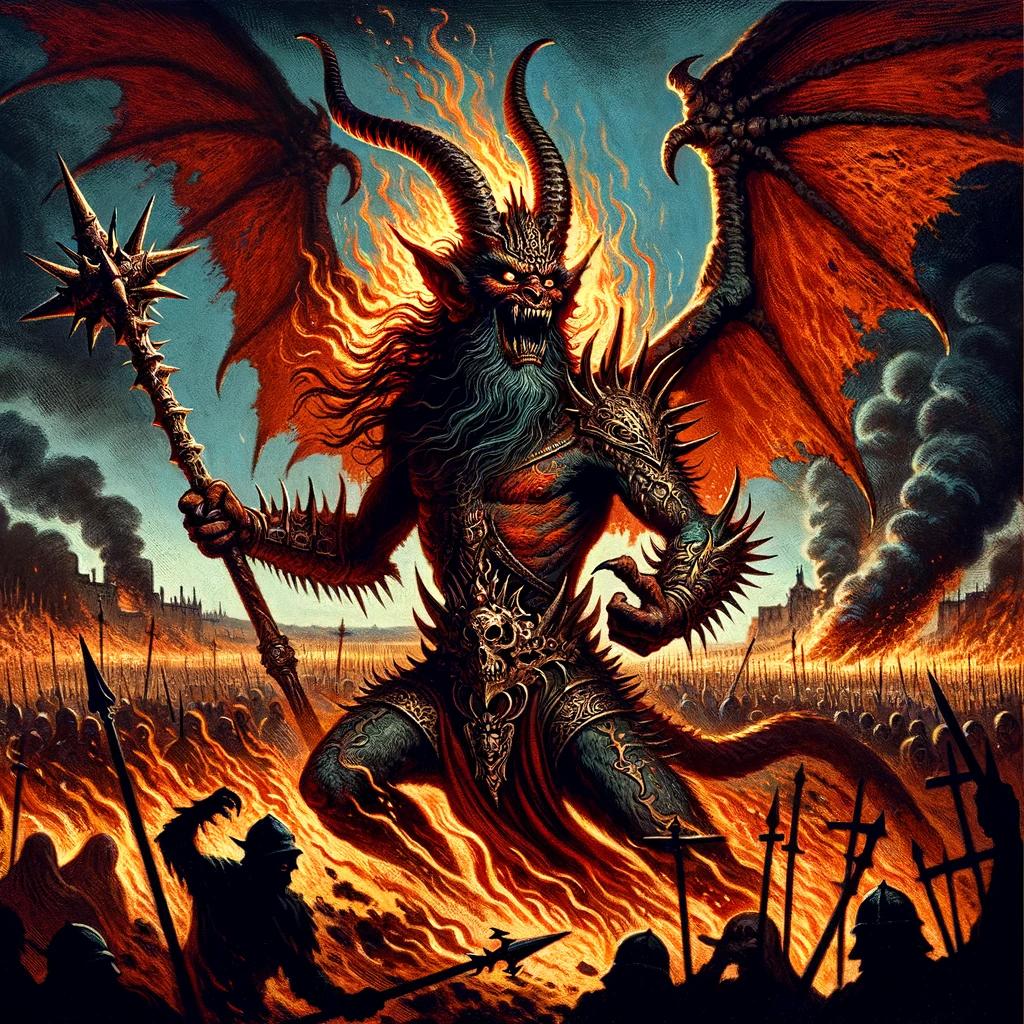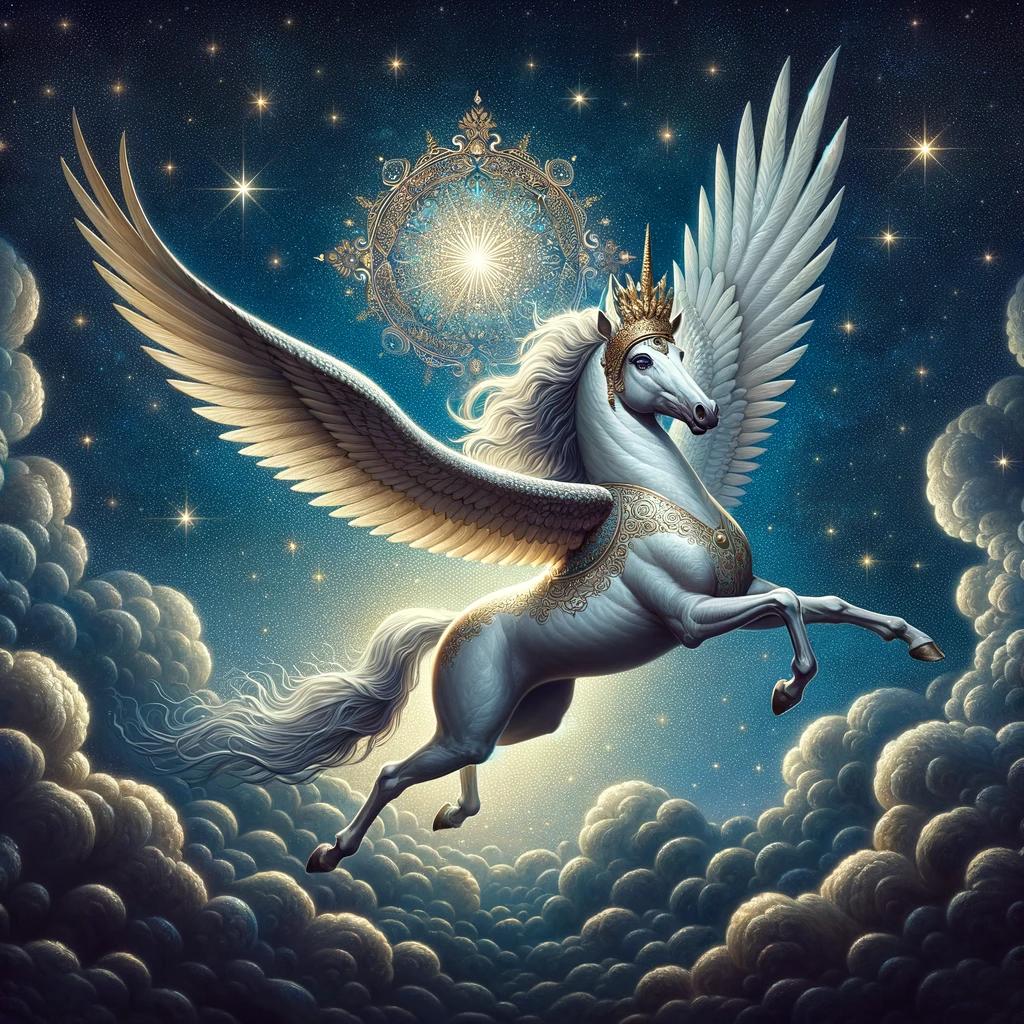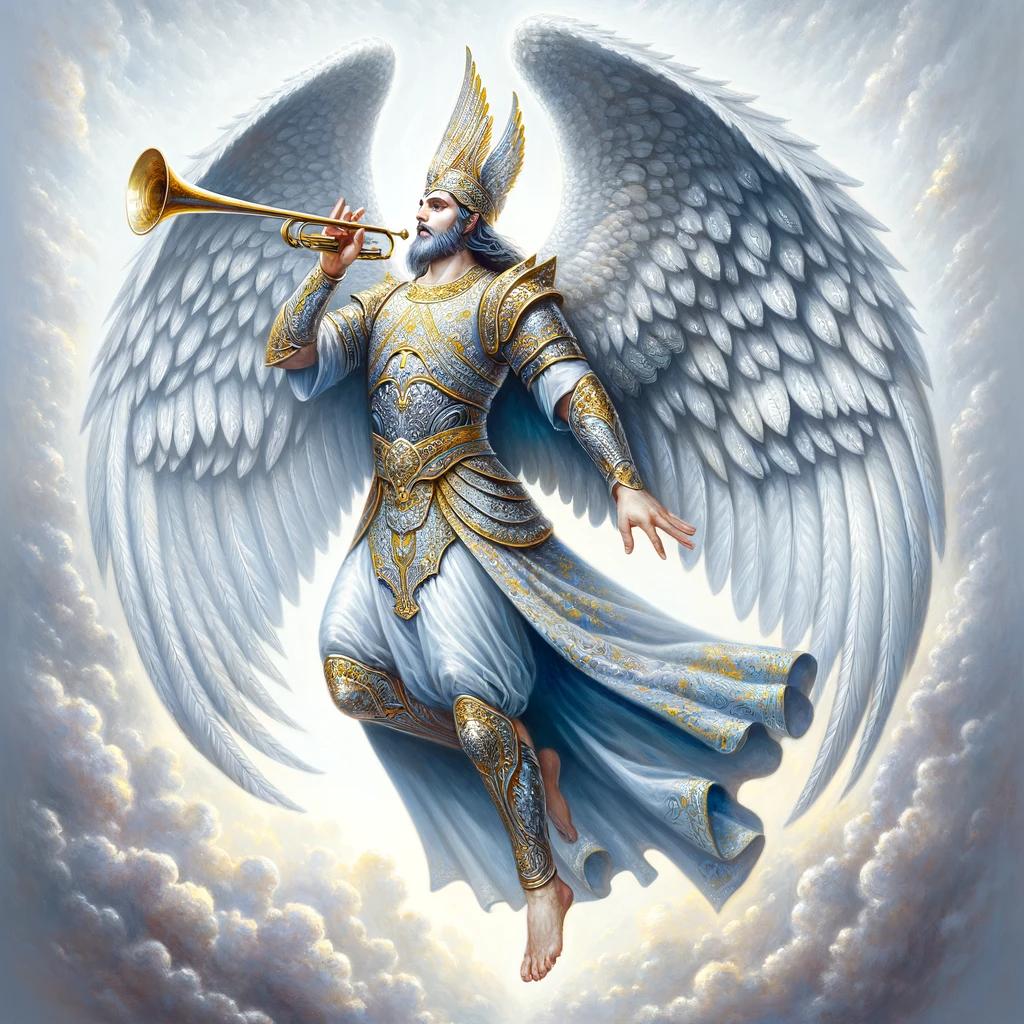Origins and Legends of Azhi Dahaka
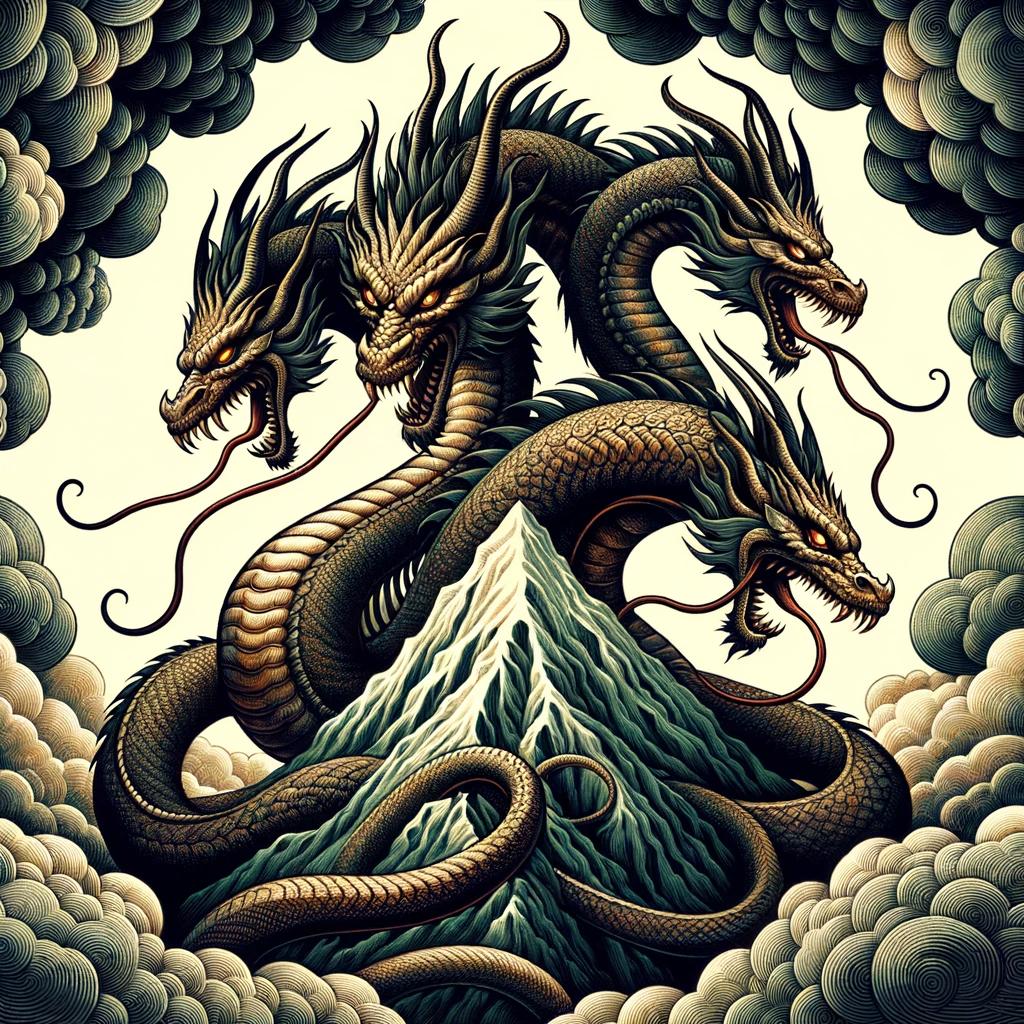
Azhi Dahaka mythology is an ancient Persian and Babylonian lore filled with intriguing legends. This mythical figure, also known as Azidahaka, is described as a demonic serpent with three heads, powerful wings, and venomous creatures in its midst.
Associated with destruction and chaos, Azhi Dahaka is portrayed as a symbol of evil in various mythological texts. Heroes rise to challenge this tyrant and ultimately defeat him, but prophecies predict his release during an apocalyptic event.
Explore the origins, physical attributes, role in Persian and Babylonian mythologies, and cultural influence of Azhi Dahaka.
Origins and Legends of Azhi Dahaka
The origins of Azhi Dahaka, a prominent figure in Persian and Babylonian mythologies, are steeped in mythical tales and legends. This section delves into the captivating narratives that surround Azhi Dahaka, shedding light on its enigmatic existence and the profound impact it has had on ancient cultures.
Zahhak: The Evil King
A key figure within the Azhi Dahaka mythology is Zahhak, also known as Zahhāk the Serpent-Shouldered. This malevolent character is depicted as a cunning and demonic being, possessing three mouths, six eyes, and three heads.
Zahhak, although humanoid in nature, exudes an astute and formidable aura, firmly establishing his reign of terror and embodying evil.
Ahriman and the Birth of Azhi Dahaka
Within the literature of Zoroastrianism, Azhi Dahaka is believed to be the offspring of Ahriman, the antagonist of Ahura Mazda. Ahriman, the embodiment of darkness, handpicks Azhi Dahaka as a tool to sow chaos and disorder in the world.
Azhi Dahaka is mentioned as the son of ruler Merdās, but is also known as Zahhak-e Tāzī due to his Arabian lineage.
Mythological Associations and Symbolism
The mythology of Azhi Dahaka bears significant symbolic meaning in Persian and Babylonian cultures. These associations explore the profound dichotomy of good and evil, the struggle between light and darkness.
Azhi Dahaka’s three heads, three jaws, and multitude of eyes represent various facets of suffering, torment, and death. As a personification of evil, its rule over storms and devastation symbolizes the destructive forces that threaten humanity.
Physical Attributes and Powers of Azhi Dahaka
The fearsome Azhi Dahaka possesses astonishing physical attributes and formidable powers, showcasing its terrifying nature.
Three Heads, Three Jaws: The Terrifying Form
Azhi Dahaka is depicted with three heads, each adorned with a set of jaws representing pain, anguish, and death. This monstrous form strikes fear in the hearts of all who witness it.
With its menacing visage, Azhi Dahaka embodies the essence of chaos and destruction.
The Destructive Wings and Multitude of Eyes
One of Azhi Dahaka’s most striking features is its powerful wings, capable of generating devastating storms and wreaking havoc. These wings enable it to traverse vast distances and unleash destruction upon the lands it traverses.
Additionally, Azhi Dahaka possesses a multitude of eyes, either six or eighteen, which allow it to surveil its surroundings with uncanny precision.
Venomous Creatures and Shapeshifting Abilities
Azhi Dahaka’s malevolence extends beyond its physical form. It is accompanied by venomous creatures, such as spiders, serpents, and scorpions, capable of unleashing a wave of poison upon the world if unleashed.
Furthermore, Azhi Dahaka possesses the ability to change shapes, at times appearing as a human figure with venomous serpents sprouting from its neck. This adaptability makes it an even more sinister and elusive adversary.
Azhi Dahaka in Persian and Babylonian Mythologies
The mythological figure of Azhi Dahaka has significant presence in both Persian and Babylonian mythologies. This section explores Azhi Dahaka’s role in Zoroastrianism and Avestan texts, its depictions in Babylonian mythology, and provides a comparative analysis of the mythological contexts in which this malevolent serpent appears.
Role in Zoroastrianism and Avestan Texts
In Zoroastrianism, Azhi Dahaka is regarded as the embodiment of evil created by Angra Mainyu (Ahriman), the antagonist of Ahura Mazda. Azhi Dahaka is depicted as a demonic serpent with three heads, three jaws, and an array of venomous creatures.
It is believed to bring forth pain, anguish, and death, and is associated with storms, drought, and diseases. The serpent is an integral part of the cosmological battle between good and evil in Zoroastrian theology.
Depictions in Babylonian Mythology
Within Babylonian mythology, Azhi Dahaka is known as the king of Babel and manifests in various forms, including a human figure with venomous serpents emerging from its neck. The serpent is associated with chaos, destruction, and the consumption of livestock and humans.
Its presence is linked to disastrous events such as droughts and illnesses. The depiction of Azhi Dahaka in Babylonian mythology reflects its role as a malevolent force with dominion over calamity.
Comparative Analysis of Mythological Contexts
A comparative examination of the depictions of Azhi Dahaka in Persian and Babylonian mythologies reveals both commonalities and distinct characteristics. While both traditions portray Azhi Dahaka as a formidable and destructive force, their symbolic interpretations and cultural contexts provide nuanced perspectives.
The Zoroastrian emphasis on the cosmic battle between good and evil presents Azhi Dahaka as a personification of malevolence intertwined with religious and moral dimensions, while the Babylonian portrayal highlights its association with societal disorder and natural disasters.
Azhi Dahaka: The Tyrant and Harbinger of Destruction
Azhi Dahaka, the relentless antagonist of the Azhi Dahaka mythology, is depicted as a tyrant ruling over storms and devastation. This monstrous serpent is believed to have the power to unleash chaos and destruction upon the world.
It is said that Azhi Dahaka’s dominion over the elements causes widespread calamities, including catastrophic storms, torrential rains, and devastating natural disasters. As the harbinger of destruction, Azhi Dahaka strikes fear into the hearts of all who encounter its wrath.
Rule over Storms and Devastation
The role of Azhi Dahaka in the mythological narrative portrays its ability to command the forces of nature. This demonic creature symbolizes the destructive power of storms, controlling tempests, hurricanes, and lightning.
The mere mention of Azhi Dahaka’s name evokes imagery of dark clouds gathering and violent winds howling. Its presence represents the overwhelming force of nature’s fury.
Feeding Habits and Association with Death
Azhi Dahaka’s insatiable hunger is a key aspect of its malevolence.
This serpent demon has a voracious appetite, feeding on livestock and even devouring humans. Its association with death and the consumption of life gives it an ominous reputation. The legends depict Azhi Dahaka as a creature that reaps the souls of its victims, perpetuating a cycle of despair and doom.
Prophecies of Apocalyptic Chaos
The mythological prophecies surrounding Azhi Dahaka foretell the imminent arrival of an apocalyptic event associated with its release. It is believed that when Azhi Dahaka is freed from its bonds, it will bring about a cataclysmic chaos that engulfs the world.
The impending doom includes the consumption of one in every three humans and animals, leading to an unprecedented era of destruction and despair.
Heroes and Defeat of Azhi Dahaka
Within the rich tapestry of Azhi Dahaka mythology, the narrative reaches its climax as heroic figures emerge to challenge the terror unleashed by this malevolent entity. These heroes, guided by their unwavering courage and determination, stand as beacons of hope against the tyrannical reign of Azhi Dahaka.
Fereydun: The Heroic Figure
Among the notable heroes, Fereydun shines as a symbol of resilience and righteousness.
Fereydun rises to the occasion, leading the charge against Azhi Dahaka with unwavering bravery and an unyielding resolve. Equipped with weapons forged through divine intervention, Fereydun faces this monstrous serpent, embodying the triumph of good over evil.
Epic Battles and Imprisonment
The clashes between the heroes and Azhi Dahaka culminate in epic battles, where valor clashes against malevolence. With deft skill and unwavering determination, the heroes engage in fierce combat, braving the wrath of Azhi Dahaka’s venomous attacks.
The gripping narratives of these confrontations capture the imagination, showcasing the tremendous sacrifices and heroic deeds required to confront and subdue the unholy powers embodied by Azhi Dahaka.
In a pivotal turn of events, the heroes successfully seize the moment and manage to defeat Azhi Dahaka. The demonic serpent is ultimately subdued, marking a significant turning point in the struggle against darkness and chaos.
The Ultimate Triumph and the Resolution of Evil
With the defeat of Azhi Dahaka, the forces of evil are finally brought to their knees, paving the way for the resolution of the chaos it once unleashed upon the realm.
The triumphant heroes, celebrated as saviors and liberators, restore balance and order to a world ravaged by the malevolence of Azhi Dahaka.
However, the cycle of darkness and redemption persists within the mythology.
Prophecies allude to the inevitable rise of Azhi Dahaka, once again heralding destruction and chaos during the apocalyptic times.
Despite this looming threat, the defeat of Azhi Dahaka stands as a testament to the enduring spirit of heroism and the unwavering determination of those who defy evil.
Their valorous acts echo throughout generations, inspiring hope and fortitude in the face of adversity.
Azhi Dahaka in Modern Culture and Influence
Azhi Dahaka, with its rich mythological lore, has left a lasting impact on modern culture. This section explores the various ways in which this malevolent serpent has been adapted and interpreted in contemporary literary and artistic works, as well as its symbolic significance in contemporary perspectives and its relevance in cultural and philosophical discourses.
Literary and Artistic Adaptations
Azhi Dahaka’s compelling mythology has captivated the imagination of many authors and artists. Numerous literary works, including novels, poetry, and short stories, have been inspired by this fearsome creature. These adaptations delve deeper into its enigmatic nature, exploring its psychological symbolism and weaving complex narratives around its malevolence.
In the art world, Azhi Dahaka has been depicted in various forms, from intricate illustrations to sculptures and paintings. Artists have sought to capture the creature’s terrifying presence and convey its power and darkness through their creative interpretations.
Symbolic Significance in Contemporary Perspectives
Azhi Dahaka’s symbolism extends beyond its mythical origins. In contemporary perspectives, this ancient serpent represents more than just a malevolent force. It has come to embody the universal concept of evil, serving as a metaphor for the destructive forces that exist within individuals, societies, and the world at large.
Furthermore, Azhi Dahaka’s intricate symbolism invites introspection and sparks philosophical debates regarding the nature of evil, the human psyche, and the eternal struggle between good and evil. Its presence in contemporary discourse prompts deeper reflections on morality, power dynamics, and the consequences of succumbing to darkness.
Relevance in Cultural and Philosophical Discourses
Azhi Dahaka’s enduring influence extends beyond individual artistic interpretations. Its presence in cultural and philosophical discourses provides a unique lens through which societal issues, such as authoritarianism, corruption, and the dehumanizing effects of power, can be examined.
Moreover, Azhi Dahaka’s tale serves as a cautionary tale, reminding us of the importance of resilience, heroism, and the triumph of good over evil. It prompts discussions on the cyclical nature of historical events and the recurrent challenges faced by humanity.
In philosophy, Azhi Dahaka’s narrative raises profound questions about the duality of human nature and the complexities of morality. It invites contemplation on the inherent capacity for both darkness and light within each individual, and the choices that shape our destinies.
As we navigate the complexities of the modern world, Azhi Dahaka’s mythology continues to resonate, urging us to confront and transcend the darkness within ourselves and society.
.












